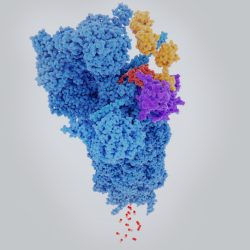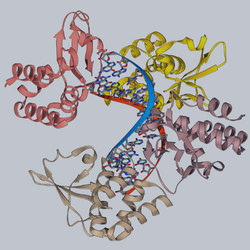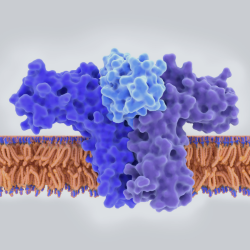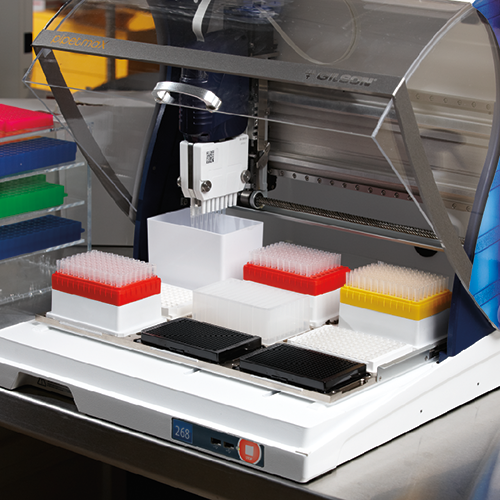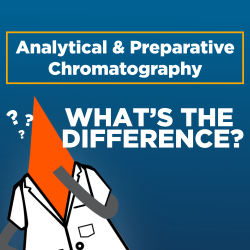Peptides, or short chains of amino acids linked together by covalent bonds, are a growing class of pharmaceutical drugs. They make up about 6% of all FDA-approved drugs but the interest in peptides as therapeutics is increasing with more and more peptides entering clinical trials each year.
Commonly, peptides are generated by several methods including:
- Chemical synthesis: Peptide chains are built from scratch one amino acid at a time. This includes methods such as solid phase peptide synthesis (SPPS) where peptides are built onto an insoluble polymer. Liquid phase peptide synthesis (LPPS), which is done in solution, is useful when steric hindrance makes it difficult to synthesize the peptide on a solid support. Other SPPS technologies, like fast flow SPPS (FF-SPPS), use continuous flow chemistry which can help increase peptide purity.
- Enzymatic hydrolysis: Enzymes break down proteins to release bioactive peptides
- Fermentation: Microorganisms break down substrates into desired peptides
- Recombinant DNA:Engineered microbes produce the target peptide
These methods produce the desired product but also generate product-related impurities, such as unwanted side reactions, truncated peptides, or process-related impurities, such as cell debris, DNA, and salts when peptides are produced using cell-based methodologies. These impurities must be removed before peptides are used for downstream applications. While process-related impurities can be removed using methods like affinity chromatography, product-related impurities must be removed with more stringent methods, like reverse phase liquid chromatography, as these impurities have similar properties to the desired product.
With a multitude of purification methods available, it’s possible to use several techniques together to enhance the purity of the peptide. Many examples of this have been documented in the literature. For example:
This article covers the range of purification and detection methods used to purify peptides from process-related impurities and product-related impurities.
Purification Techniques
Reversed-phase Liquid Chromatography (RPLC)
Reversed-phase liquid chromatography is the most popular method for peptide purification and is ideal for separating target peptides from truncated or branching peptides with closely related structures. Separation in RPLC is based on hydrophobicity using a non-polar stationary phase and a polar mobile phase. Hydrophobic interactions between the peptide and the stationary phase retain peptides on the column with more hydrophobic peptides retaining on the column for longer times than more hydrophilic peptides.
Ion Exchange Chromatography
Ion exchange chromatography separates peptides based on charge. Because peptides carry different charges, ion exchange chromatography uses resins with the opposite charge to capture the peptides while other molecules are washed out. Then the peptides can be eluted by charge using a salt concentration gradient where weakly bound peptides (less charged) will elute first before tightly bound peptides (more charged).
However, ion exchange chromatography is incompatible with mass spectrometry detection because it uses high concentrations of non-volatile salts.
Affinity Chromatography
Affinity purification methods are based on the specificity of the resin for the peptide and can be done using immobilized metal ions to purify peptides containing histidines or antibodies specific to the peptide. While the peptide binds to the resin, all other molecules flow out of the column. Then, the peptides can be eluted for further processing.
Affinity purification is best used during the capture step of peptide purification to separate process-related impurities after protein digestion.
Purification can be done by cartridges (SPE) or columns depending on the quantity and purity required.
Detection Methods
After separating molecules using the above techniques, a detector helps identify when your target molecule will elute. Common detection methods include ultraviolet/visible light and mass spectrometry.
UV-Vis
Detection by ultraviolet/visible light (UV-Vis) is based on the absorption of UV or visible light by molecules. This method relies on the fact that certain amino acids absorb light at different wavelengths (ex: tryptophan at 278 nm, tyrosine at 274 nm, phenylalanine at 257 nm, and histidine at 211 nm). This method is commonly used to detect peptides after separation. However, UV-vis is less sensitive than other methods like mass spectrometry and unless you are using high-resolution UV spectra, UV-vis detectors cannot provide structural information.
Mass Spectrometry
Mass spectrometry, which ionizes molecules in a sample and separates them based on their mass-to-charge ratios, can improve the detection of the target peptide from product-related impurities formed during chemical synthesis. RPLC solvents are also highly compatible with MS making it simple to couple RPLC with MS. If using tandem mass spectrometry, the sequence of the peptide can be determined.
A Suite of Purification Systems for Any Peptide Purification Method
Gilson offers instruments and expertise that encompass a variety of peptide purification workflows. Visit our peptide/protein purification page for more information on:
- Peptide desalting
- Mass spectrometers
- LC-MS systems
- UV-Vis detectors
Learn More

















